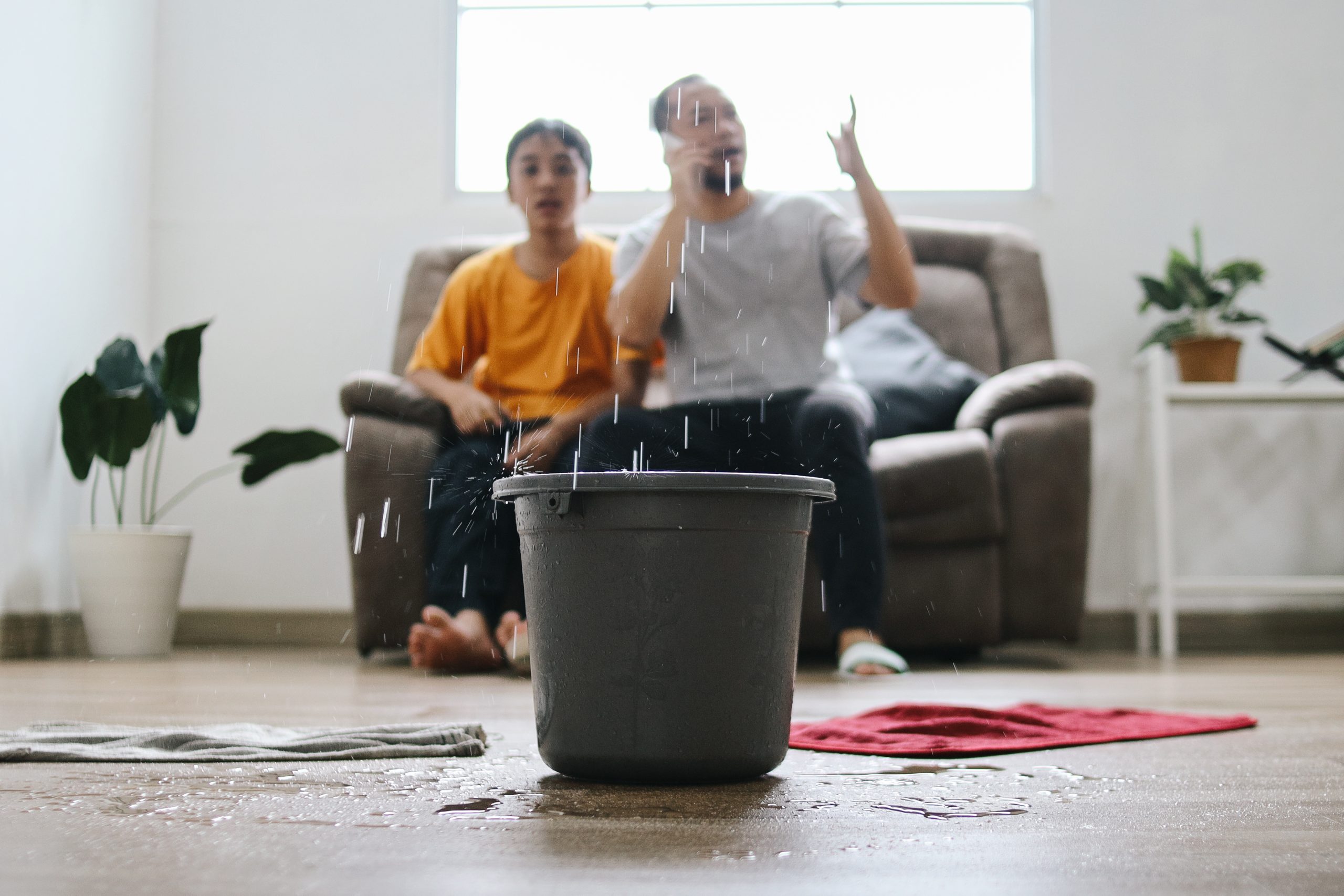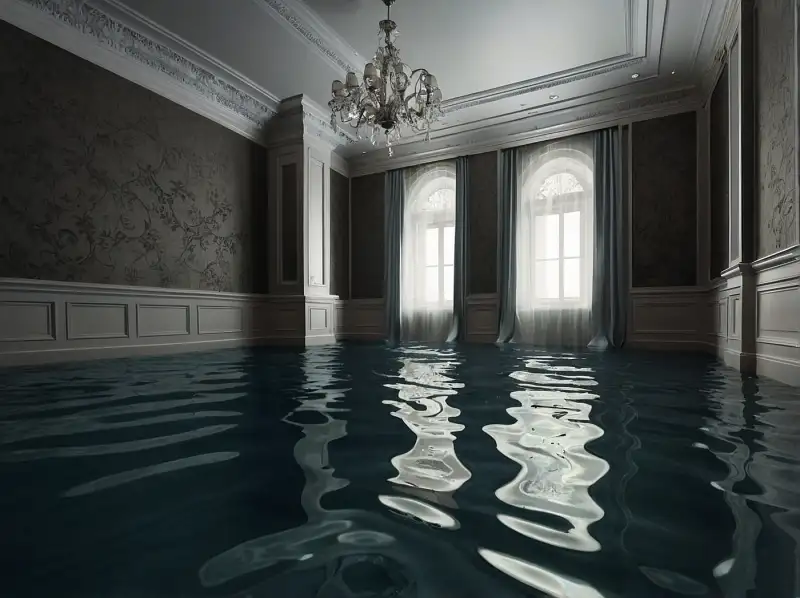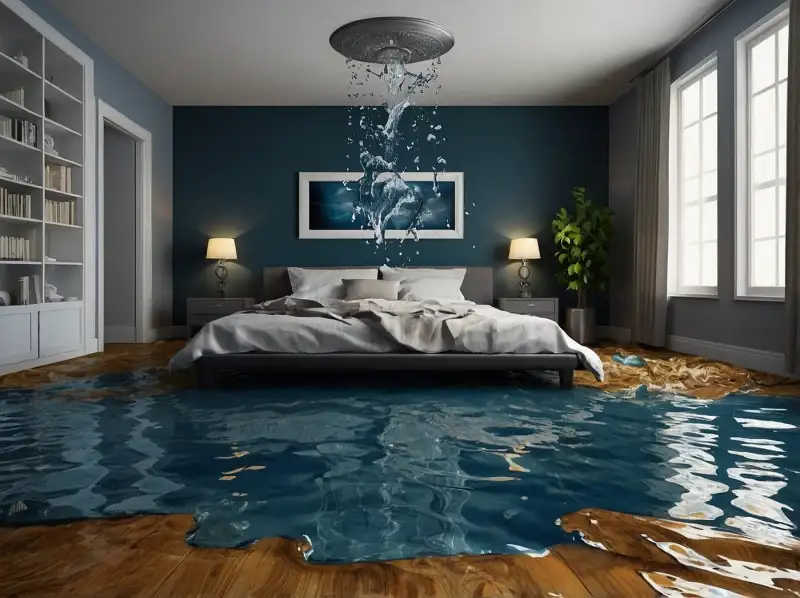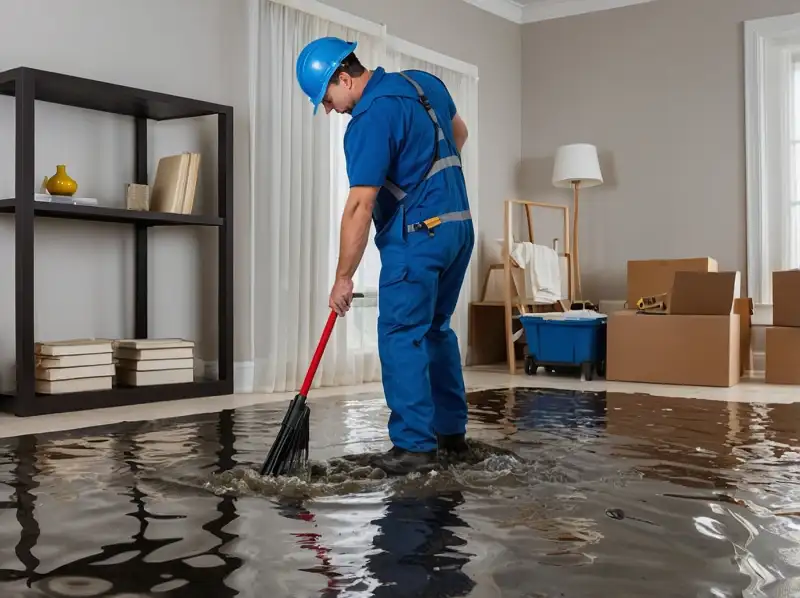
28
Aug
Water Damage Restoration 101: Everything You Need to Know
Imagine waking up to a soggy carpet, dripping ceilings, or, worse, a basement that looks more like a swimming pool. Water damage has a way of sneaking up on you, and when it strikes, it can leave behind a trail of costly destruction. Whether it’s a burst pipe, an overflowing washing machine, or a surprise visit from Mother Nature, knowing how to handle water damage can mean the difference between a minor inconvenience and a full-blown disaster.
But here’s the good news—you’re not alone, and you don’t have to navigate water damage restoration in the dark. From understanding what causes water damage to knowing when to grab a mop or call in the pros, we’ve got you covered. In this guide, we’ll walk you through everything you need to know to protect your home, save money, and regain peace of mind.
Here’s what we’ll cover:
- Water Damage Restoration 101: Everything You Need to Know
- What Causes Water Damage?
- Types of Water Damage
- DIY vs. Professional Restoration
- Preventing Future Damage
So, grab a cup of coffee, and let’s dive in—because the best way to fight water damage is to stay ahead of it. Let’s get started!
What Causes Water Damage? Common Culprits in Homes
Water damage is one of those things you don’t think about until it’s already wreaking havoc in your home. One day everything’s dry and cozy, and the next, you’re stepping into a puddle where your carpet used to be. So, what causes this unwelcome guest to show up uninvited? Let’s take a closer look at the usual suspects that lead to water damage and how you can spot them before they become a big headache.
1. Leaky Pipes: The Silent Drippers
Leaky pipes are the sneaky culprits of many water damage cases. It might start as an innocent drip under your sink that you ignore because, well, it’s “just a drip,” right? But over time, that small leak can turn into a big mess. Pipes can crack, corrode, or even burst when they’re under pressure (like during winter freezes).
Keep an eye out for telltale signs like water stains on your walls or ceilings, musty smells, or even a drop in your water pressure. And trust me, that “tiny” leak could be adding up to big repair bills and costly water damage restoration if left unchecked. So, don’t let those pipes get away with it—fix them before they wreak havoc!
2. Overflowing Appliances: When Machines Misbehave
You love your appliances, but sometimes, they can cause major chaos in your home. Washing machines, dishwashers, and even refrigerators with water dispensers are common offenders when it comes to water damage. A loose hose, a clogged drain, or a malfunctioning seal can quickly turn your laundry day or dinner prep into a soggy disaster.
One minute you’re making coffee, and the next, your kitchen floor looks like a small lake. Sound familiar? To avoid this nightmare, make it a habit to check hoses and seals on your appliances regularly. And if you spot any puddles forming, act fast—small leaks can quickly turn into major problems that require professional water damage restoration services.
3. Storms and Flooding: Mother Nature’s Surprise Attacks
Sometimes, it’s not your home’s fault—Mother Nature just has a way of crashing the party. Heavy rainstorms, flash floods, and even melting snow can bring an overwhelming amount of water into your home in no time. Basements are especially vulnerable to water seeping in through cracks in the foundation or poorly sealed windows.
If you live in an area prone to storms or floods, it’s crucial to stay prepared. Clean your gutters to prevent water from pooling around your home, and make sure your foundation and windows are properly sealed. Investing in a sump pump can also be a lifesaver, especially if your basement tends to be a water magnet.
4. Clogged Gutters: The Unseen Villains
Gutters might not be the most glamorous part of your home, but they play a critical role in keeping water damage at bay. When gutters get clogged with leaves, dirt, and debris, they can’t do their job of directing water away from your home. Instead, that water overflows and starts creeping into places it doesn’t belong—like your walls, foundation, and basement.
To avoid this, show your gutters some love by cleaning them out at least twice a year. It’s not the most fun chore, but it’s a lot better than dealing with water damage restoration down the line. Pro tip: Installing gutter guards can save you some elbow grease and keep water flowing where it should.
5. Plumbing Mishaps: From Burst Pipes to Toilet Troubles
Your home’s plumbing is like its lifeline, but when something goes wrong, it can turn into a major disaster. Burst pipes, backed-up toilets, and clogged drains are some of the most common causes of water damage. And let’s be honest—nothing ruins your day faster than a toilet overflow or a pipe bursting in the middle of the night.
The good news? Many plumbing issues are preventable with regular maintenance. Keep an eye on your water bill—if it suddenly spikes, that could be a sign of a hidden leak. And if your pipes are older, consider replacing them before they decide to give up on you at the worst possible moment.
6. Roof Leaks: A Top-Down Problem
Your roof is your home’s first line of defense against the elements, but it can’t do its job if it’s damaged. Missing shingles, cracked flashing, or even a clogged roof drain can let water seep into your attic and eventually make its way down to your ceilings and walls.
If you notice water stains or a damp smell in your attic, it’s time to investigate. Regular roof inspections can save you from unexpected leaks and costly repairs. Remember, a little preventative care goes a long way when it comes to avoiding water damage restoration!
7. HVAC Issues: The Hidden Source of Moisture
Your heating, ventilation, and air conditioning (HVAC) system can also be a surprising cause of water damage. When condensation builds up in your HVAC unit, it needs somewhere to go. If the drain lines are clogged or the system isn’t maintained properly, that water can end up pooling where it shouldn’t.
A quick check-up on your HVAC system and regular cleaning of the drain lines can prevent moisture from causing damage. Trust me, dealing with your AC unit’s condensation is way easier than dealing with a water-damaged home!
Stay Ahead of Water Damage
From leaky pipes to unexpected storms, water damage can happen when you least expect it. The key to keeping your home safe is staying vigilant and addressing small issues before they escalate. Regular maintenance, quick fixes, and knowing when to call the professionals for water damage restoration can save you time, money, and stress.
So, don’t let water damage catch you off guard! A little preparation today can make all the difference in keeping your home dry, cozy, and damage-free tomorrow. Remember, your home deserves some love too—it works hard to keep you safe and comfortable!
Types of Water Damage: Clean, Grey, and Black Water Explained
Not all water damage is created equal. In fact, water damage comes in three distinct types: clean, grey, and black water. Each type brings its own level of risk and challenges, which makes understanding them crucial when you’re dealing with a soggy situation. Don’t worry—this isn’t going to feel like a science lesson. I’ll break it down in a way that’s easy to understand, so you’ll know exactly what you’re up against and how to tackle it. Let’s dive in (pun intended)!
1. Clean Water Damage: The ‘Good’ Kind of Bad
When it comes to water damage, clean water is like the least evil villain in the story. It comes from sources like broken water supply lines, overflowing sinks, or even rainwater. Basically, it’s water that hasn’t been contaminated—yet. You might get lucky and catch clean water damage before it turns into something worse.
The good news is, clean water is usually safe to handle yourself—at least initially. Grab a mop, some towels, or even a wet/dry vacuum, and you can often get things under control pretty quickly. But, there’s a catch: if clean water sits around for too long (think 24 to 48 hours), it can turn into grey water. That’s when things get a little more complicated. So, the key here is speed. Clean it up fast, and you’ll save yourself a ton of trouble.
2. Grey Water Damage: The ‘Uh-Oh’ Stage
Grey water is like the awkward middle child of water damage. It’s not as harmless as clean water, but it’s not as scary as black water either. This type of water comes from sources like washing machines, dishwashers, or toilet overflows (but only if there’s no solid waste involved—yep, we’re going there).
Grey water can contain some contaminants, such as soap residue, grease, or mild bacteria. While it’s not immediately dangerous, you wouldn’t want to soak your hands in it for long—or at all, really. Handling grey water damage often requires some basic protective gear, like gloves and boots, to avoid coming into contact with bacteria or irritants. And just like clean water, if left untreated, grey water can escalate into something much nastier: black water.
The lesson here? If you’re dealing with grey water damage, it’s best to call in the professionals sooner rather than later. They have the equipment and know-how to handle the mess safely and effectively.
3. Black Water Damage: The Worst of the Worst
Brace yourself, because black water damage is where things get serious—and a little gross. Black water comes from sources like sewage backups, floodwaters, or water contaminated with harmful chemicals and toxins. It’s the type of water you absolutely don’t want to mess with on your own.
Black water is dangerous because it’s teeming with harmful pathogens, bacteria, and possibly even viruses. Exposure to it can cause serious health risks, from skin infections to respiratory issues. Think of it this way: if the water has come into contact with raw sewage, animal waste, or harmful chemicals, it’s officially black water.
When you’re dealing with black water damage, step one is simple—don’t touch it. Call a professional water damage restoration team immediately. They’ll have the specialized equipment and protective gear needed to handle the situation safely. And remember, black water can contaminate almost everything it touches, so be prepared for some serious cleaning—or even replacing—of affected items.
Why Understanding Water Types Matters
So, why does it matter whether you’re dealing with clean, grey, or black water? Well, for starters, knowing the type of water damage helps you determine how to respond. For clean water, you might be able to handle the cleanup yourself if you act quickly. Grey water is a bit trickier, and black water? That’s an absolute no-go for DIY solutions.
But it’s not just about cleanup—it’s about safety. Handling the wrong type of water without proper precautions can put your health at risk, and nobody wants that. Plus, understanding the differences helps you communicate effectively with water damage restoration professionals. The more they know about the situation, the faster they can come to your rescue.
Prevention Tips to Keep Water Damage at Bay
While you can’t prevent every water damage disaster (looking at you, Mother Nature), there are steps you can take to reduce the risks. Regularly check your plumbing for leaks, maintain your appliances, and clean your gutters to keep water flowing away from your home. And if you notice a problem, address it right away—don’t wait for clean water to turn into a grey or black water nightmare.
Wrapping It All Up
Water damage restoration is a process that becomes a lot easier when you understand the type of water you’re dealing with. Clean water might seem like the least of your worries, but if you ignore it, it can morph into something worse. Grey water is the middle ground where things get a little tricky, and black water? Well, that’s when you grab your phone and call in the pros.
So, the next time you’re faced with water damage, take a deep breath and assess the situation. With the right knowledge (and maybe a little help from the experts), you can handle anything water throws your way. Just remember—clean it up quickly, stay safe, and keep those gutters in check!
DIY vs. Professional Restoration: When to Call the Experts
Water damage in your home can be overwhelming, and your first instinct might be to roll up your sleeves and handle it yourself. But here’s the thing: while some situations are perfect for a DIY approach, others scream for professional help. The trick is knowing when to grab your mop and when to grab your phone. Let’s explore the pros, cons, and red flags so you can make the right call when water damage strikes.
1. When a DIY Approach Can Save the Day
Not every water-related mishap needs an expert intervention. Some smaller problems can be tackled with a bit of elbow grease and common sense. For example, if your toddler decided to create an indoor swimming pool by leaving the tap running, you might be able to dry things up on your own.
Here’s the rule of thumb: if the water is clean, hasn’t been sitting for more than 24 hours, and is contained in a small area, you’re good to go with DIY. All you need are a few tools like a wet/dry vacuum, some towels, and maybe a fan or two to dry out the space.
However, even with minor water damage, timing is everything. If you don’t act quickly, clean water can soak into carpets, walls, and floors, turning into a breeding ground for mold. So, set a timer, grab your gear, and get to work before things get worse!
2. The Perks (and Limits) of DIY Restoration
Let’s face it: DIY projects can feel incredibly satisfying. You save money, learn a new skill, and might even feel like a hero saving the day. Plus, for smaller issues like a leaky faucet or an overflowing washing machine, DIY can often solve the problem without breaking the bank.
But (and it’s a big “but”), DIY has its limits. Sure, you can handle surface-level water damage, but what about the hidden moisture creeping behind your walls? Or the water that seeped under your floorboards? Unless you’ve got x-ray vision and industrial drying equipment stashed in your garage, there’s only so much you can do.
The takeaway? DIY is great for small, manageable issues, but if the damage feels even a little overwhelming, it’s time to consider calling in the pros.
3. When to Call the Professionals: The Red Flags
So, when should you skip the DIY route and go straight to the experts? Let’s talk about the red flags that signal it’s time for professional water damage restoration.
- The Water Is Contaminated: If the water isn’t clean (think grey or black water), do not attempt to handle it yourself. Contaminated water can contain harmful bacteria and toxins that require professional-grade equipment and expertise to safely remove.
- The Damage Is Extensive: If multiple rooms are affected or water has been sitting for more than 24 hours, it’s best to call for help. Professionals can assess the damage, remove all moisture, and prevent mold growth.
- You Spot Mold: If you see or smell mold, it’s officially out of DIY territory. Mold can spread quickly and cause health issues, so leave this one to the experts.
- You Don’t Know Where the Water Came From: Mystery water? Don’t risk it. Professionals can identify the source, stop the problem, and restore your home safely.
- Structural Damage Is Involved: If water has soaked into your walls, ceilings, or floors, you’ll need a pro to assess and repair the structural integrity of your home.
The Benefits of Professional Water Damage Restoration
Calling in the experts might feel like admitting defeat, but trust me—it’s not. Professional water damage restoration companies have the tools, experience, and manpower to handle even the trickiest situations. They use advanced moisture detection equipment to find hidden water, industrial-grade fans and dehumidifiers to dry out your home, and specialized cleaning solutions to sanitize affected areas.
Not only does this save you time and stress, but it also ensures that the problem is completely resolved. No hidden mold, no lingering moisture, and no nasty surprises popping up weeks later. Plus, many restoration companies work directly with your insurance provider, making the process as painless as possible.
Weighing Costs: DIY vs. Professional Help
Let’s talk money because, let’s be real, that’s often the deciding factor. DIY restoration might seem cheaper at first, but it’s important to consider the long-term costs. If you miss hidden water damage or fail to dry everything properly, you could end up with mold, structural issues, or even higher repair bills down the line.
Professionals might cost more upfront, but they offer peace of mind and thorough results. Plus, if your water damage is covered by insurance, the cost of professional restoration could be partially or fully reimbursed. So, weigh the pros and cons carefully before making a decision.
The Bottom Line
Water damage can feel like a disaster, but with the right approach, you can handle it like a pro—or let the real pros handle it for you. For small, manageable issues, DIY can save you time and money. But when the water damage is extensive, contaminated, or just plain overwhelming, it’s time to call in the experts. After all, your home deserves the best care, and sometimes, that means knowing when to let the professionals take the wheel.
Remember, whether you DIY or hire a pro, the key is acting fast. Water damage waits for no one, so don’t hesitate to tackle the problem head-on. You’ve got this!
Preventing Future Damage: Maintenance Tips for Peace of Mind
Water damage is one of those headaches you’d rather avoid entirely. Sure, water damage restoration can save the day, but wouldn’t it be better if you never had to deal with it in the first place? The good news is that a little maintenance goes a long way in keeping your home safe and dry. Let’s dive into some simple, practical tips that will help you prevent water damage before it even starts.
1. Keep an Eye on Your Plumbing
Your plumbing is like the circulatory system of your home, but it’s easy to take it for granted—until something goes wrong. A small leak today can become a burst pipe tomorrow, so regular checks are a must. Inspect exposed pipes for any signs of wear, such as rust, cracks, or condensation. Pay attention to your water pressure, too; unusually low pressure could mean there’s a leak lurking somewhere.
Don’t forget about your water heater. A malfunctioning water heater can cause major water damage if it leaks or bursts. Check it regularly for corrosion or leaks, and flush it annually to remove sediment buildup. A little time spent on maintenance now can save you from a soaked and soggy disaster later.
2. Clean Those Gutters and Downspouts
Ah, gutters—the unsung heroes of your home’s defense against water damage. When they’re doing their job, they direct rainwater safely away from your home. But when they’re clogged with leaves, dirt, and debris, they can cause water to overflow and seep into your walls or foundation.
Make it a habit to clean your gutters at least twice a year—once in the spring and again in the fall. If you live in an area with lots of trees, you might need to clean them more often. And don’t forget to check your downspouts. Make sure they’re directing water at least five to ten feet away from your home’s foundation. Trust me, your basement will thank you.
3. Inspect Your Roof Regularly
Your roof is your home’s first line of defense against the elements, so keeping it in good shape is essential. Missing shingles, damaged flashing, or clogged roof drains can all lead to leaks and, you guessed it, water damage.
Take a look at your roof from the ground every few months, or after a big storm, to spot any obvious issues. Better yet, schedule a professional inspection once a year to catch problems before they turn into disasters. A well-maintained roof isn’t just a shield against rain; it’s peace of mind on a rainy day.
4. Be Smart About Landscaping
Believe it or not, your yard plays a big role in preventing water damage. Improper grading can cause water to pool around your home’s foundation, leading to seepage and cracks. Make sure your yard slopes away from your house, so rainwater flows where it’s supposed to.
Also, be mindful of trees and shrubs planted near your home. Their roots can grow into underground pipes, causing leaks or blockages. Trim overgrown plants and keep a safe distance between large trees and your foundation to avoid any unintentional plumbing sabotage.
5. Maintain Your Appliances
Appliances are a modern convenience, but they can also be sneaky sources of water damage. Washing machines, dishwashers, and refrigerators with water dispensers all rely on hoses that can wear out or burst over time. Check these hoses regularly for cracks, bulges, or loose connections.
Replace old hoses with high-quality, reinforced ones, and consider shutting off the water supply to appliances when you’re not using them for long periods. A quick inspection every few months can save you from an unexpected flood in your kitchen or laundry room.
6. Install a Sump Pump and Backup System
If your home has a basement, a sump pump is a must-have tool in your water damage prevention toolkit. A sump pump works by channeling water away from your home, keeping your basement dry even during heavy rains.
Make sure your sump pump is in good working condition by testing it regularly. It’s also worth investing in a battery backup system, so it can keep running during power outages—because let’s face it, storms and power outages tend to go hand in hand.
7. Monitor Your Water Bill
Sometimes, the first sign of water trouble isn’t visible—it’s hiding in your water bill. If you notice a sudden spike in usage, it could mean there’s a leak somewhere in your home. This is especially common with hidden leaks in walls or under floors, where damage can go unnoticed until it’s too late.
Keep an eye on your bill, and if something seems off, investigate. Even small leaks can waste gallons of water over time, so catching them early can save you money and prevent bigger problems down the road.
The Bottom Line on Preventing Water Damage
Preventing water damage might not sound glamorous, but it’s one of the smartest things you can do for your home. A little regular maintenance—like checking your plumbing, cleaning your gutters, and inspecting your roof—can save you from costly water damage restoration later. Think of it as an investment in your peace of mind.
Water damage doesn’t have to be inevitable. By staying proactive and addressing small issues before they escalate, you can keep your home safe, dry, and comfortable for years to come. After all, your home works hard to protect you—it’s only fair to return the favor!
Wrapping It Up: Keep Calm and Stay Dry
Water damage might seem overwhelming, but with the right knowledge and a proactive mindset, you can tackle it head-on. Whether you’re dealing with a small leak or a basement flood, understanding the causes, types, and solutions for water damage puts you in control. From learning when to handle it yourself to knowing when to call in the experts, every step you take can save you time, money, and unnecessary stress.
Prevention is always better than restoration, so don’t wait for a problem to arise before taking action. Regular maintenance, a watchful eye on your home’s plumbing, and smart investments like sump pumps and proper grading can go a long way in protecting your space. And remember, when disaster strikes, acting quickly is key to minimizing damage and restoring your peace of mind.
Water damage might be an unwelcome guest, but it doesn’t have to take over your home. With these tips and insights, you’re ready to stay one step ahead, keep your home safe, and enjoy the dry, cozy haven you’ve worked hard to create. Stay vigilant, stay prepared, and remember—you’ve got this!



